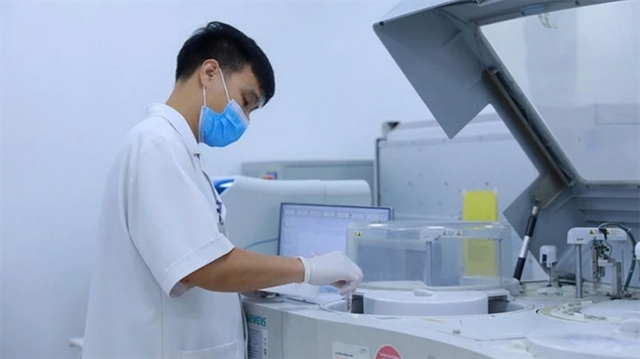 Opinion
Opinion


|
| Phùng Văn Hùng, a permanent member of the National Economic Commission. — Photo kinhtetrunguong.vn |
PhD Phùng Văn Hùng, a permanent member of the National Economic Commission talks about the significance of the non-observe economy in the Việt Nam's GDP
Do you have any comments on the inclusion of the non-observed economy as an element in the GDP?
A key objective to include the non-observed economy (NOE) in the GDP is to have a more accurate report on the performance of business and production activities in Việt Nam.
Many countries have already calculated their national economy basing on the NOE formula.
A key objective of using the formula is to evaluate the real result of production and business activities of the underground economy in order to have a true picture of the national economy to help Vietnamese authorities complete the country’s legal system and improve the State management of the national economy.
That’s why, the Resolution 01/NQ-CP on the national tasks and measures has come up with a plan for “national socio-economic development and the State budget projection for the year 2020”. And the General Statistics of Việt Nam is assigned to act as a focal point in conducting a national survey on the performance of the non-observed economy in the country. Of course, the result of such a survey is very important as it is an important input to develop the five-year National Socio-Economic Development Plan (2021-2026) and the 10-year National Strategy for Socio-Economic Development (2021-2030).
Do you think that if the NOE is done properly, it will become an important factor helping Việt Nam GDP to jump to 30 per cent as it is projected by some economic experts?
The NOE includes all illegal economic activities; unofficial economic activities which have not been observed; self-sufficient economy, household economy and other activities that have not been covered in the course of collecting statistic data. The real value of the NOE in the GDP depends very much on the way the NEO has been conducted and the precision level in the national statistics of each nation.
To my knowledge, among the 24 countries which have made public their NOE/GDP, only five countries have the percentage under 5 per cent; six countries having the percentage under 10-15 per cent; seven countries with 16-20 per cent; four countries with 21-30 per cent and two countries with more than 30 per cent.
For the case of Việt Nam, as all illegal economies, namely prostitution, smuggling, gambling and others are not included in the GDP, so in my opinion Việt Nam’s NOE will be about 20-25 per cent of the GDP.
What are the reasons for you to come up with a projection that Việt Nam’s NOE will be about 20-25 per cent of the GDP?
At present, Việt Nam has between 5-7 million households and individuals involved in economic activities. Of course, income sources from these activities have contributed big shares to the country’s GDP. Yet until now we have not officially conducted any survey on their actual contributions to the national GDP.
Besides, underground economic activities, specially cross-border trade between Việt Nam and its neighbouring countries have not yet been including in our official survey. I’m pretty sure if the survey is comprehensive, Việt Nam’s GDP will be much higher.
But in Việt Nam nowadays, cash in hand is still a common practice. Can we do a calculation on that?
I’m pretty sure information technology can help us to do that. For example, we have done a survey on household self-sufficiency in their economy. So, I’m confident we can conduct such a survey on activities mentioned above.
To launch a survey on all socio-economic activities is not only the task of the statistic office, but all economic sectors, including agriculture, taxation office, trade and others. There is a proverb saying “where there’s a will, there’s a way”, I’m confident that we can calculate and come up with a reliable GDP for Việt Nam. — VNS




